Conditional disruption of synaptic transmission induces male-male courtship behavior in Drosophila
- PMID: 12239352
- PMCID: PMC130616
- DOI: 10.1073/pnas.202489099
Conditional disruption of synaptic transmission induces male-male courtship behavior in Drosophila
Abstract
It is reported here that male-male courtship behavior is evoked instantaneously in the fruit fly Drosophila by conditional disruption of synaptic transmission. A temperature-sensitive allele of the Drosophila dynamin gene shibire (shi(ts1)) was expressed by using the GAL4/UAS system to disrupt synaptic transmission from GAL4-positive neurons in a temperature-dependent manner. An enhancer-trap GAL4 line C309 directing shi(ts1) expression in central and peripheral neurons (C309/UAS-shi(ts1)) initiated stereotypical precopulatory behavior toward other mature males immediately after a temperature shift from the permissive to restrictive temperature. At the restrictive temperature, C309/UAS-shi(ts1) males formed "courtship chains" and exhibited abnormally high levels of head-to-head interactions. The temperature-induced male-male courtship is attributable not to an increase in sexual attractiveness but to an increase in sexual activity of C309/UAS-shi(ts1) males. Interestingly, the temperature-induced increase in sexual activity is specific toward male partners, because C309/UAS-shi(ts1) males courted receptive virgin females less vigorously and copulated less efficiently after shifted to the restrictive temperature. Among the GAL4-positive neurons in C309, conditional disruption of certain cholinergic neurons but not the mushroom body intrinsic neurons plays a critical role in the induction of male-male courtship. These neurons may be involved in inhibitory systems that normally suppress aberrant male-male courtship. The presented strategy that can induce behavioral abnormalities by disrupting synaptic transmission in an acute and noninvasive manner will allow further exploration as to how distinct neuronal groups control sexual orientation and other aspects of reproductive behavior in Drosophila.
Figures
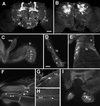
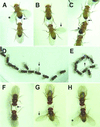
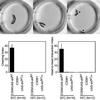
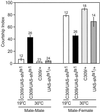

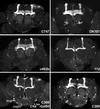
Similar articles
-
Conditional modification of behavior in Drosophila by targeted expression of a temperature-sensitive shibire allele in defined neurons.J Neurobiol. 2001 May;47(2):81-92. doi: 10.1002/neu.1018. J Neurobiol. 2001. PMID: 11291099
-
Functional analysis of fruitless gene expression by transgenic manipulations of Drosophila courtship.Proc Natl Acad Sci U S A. 2005 Nov 15;102(46):16550-7. doi: 10.1073/pnas.0507056102. Epub 2005 Sep 22. Proc Natl Acad Sci U S A. 2005. PMID: 16179386 Free PMC article.
-
Differential roles of two major brain structures, mushroom bodies and central complex, for Drosophila male courtship behavior.J Neurobiol. 2006 Jul;66(8):821-34. doi: 10.1002/neu.20262. J Neurobiol. 2006. PMID: 16673386
-
Neurogenetics of courtship and mating in Drosophila.Adv Genet. 2008;62:67-184. doi: 10.1016/S0065-2660(08)00603-2. Adv Genet. 2008. PMID: 19010254 Review.
-
Drosophila female courtship and mating behaviors: sensory signals, genes, neural structures and evolution.Curr Opin Neurobiol. 2010 Dec;20(6):764-9. doi: 10.1016/j.conb.2010.09.007. Epub 2010 Oct 8. Curr Opin Neurobiol. 2010. PMID: 20934322 Review.
Cited by
-
Identification of excitatory premotor interneurons which regulate local muscle contraction during Drosophila larval locomotion.Sci Rep. 2016 Jul 29;6:30806. doi: 10.1038/srep30806. Sci Rep. 2016. PMID: 27470675 Free PMC article.
-
Myc suppresses male-male courtship in Drosophila.EMBO J. 2022 Apr 4;41(7):e109905. doi: 10.15252/embj.2021109905. Epub 2022 Feb 15. EMBO J. 2022. PMID: 35167135 Free PMC article.
-
Compartment specific regulation of sleep by mushroom body requires GABA and dopaminergic signaling.Sci Rep. 2021 Oct 8;11(1):20067. doi: 10.1038/s41598-021-99531-2. Sci Rep. 2021. PMID: 34625611 Free PMC article.
-
Modulation of innate and learned sexual behaviors by the TRP channel Painless expressed in the fruit fly brain: behavioral genetic analysis and its implications.Front Behav Neurosci. 2014 Dec 2;8:400. doi: 10.3389/fnbeh.2014.00400. eCollection 2014. Front Behav Neurosci. 2014. PMID: 25520634 Free PMC article. Review.
-
Different kenyon cell populations drive learned approach and avoidance in Drosophila.Neuron. 2013 Sep 4;79(5):945-56. doi: 10.1016/j.neuron.2013.07.045. Neuron. 2013. PMID: 24012007 Free PMC article.
References
Publication types
MeSH terms
Substances
Grants and funding
LinkOut - more resources
Full Text Sources
Molecular Biology Databases

